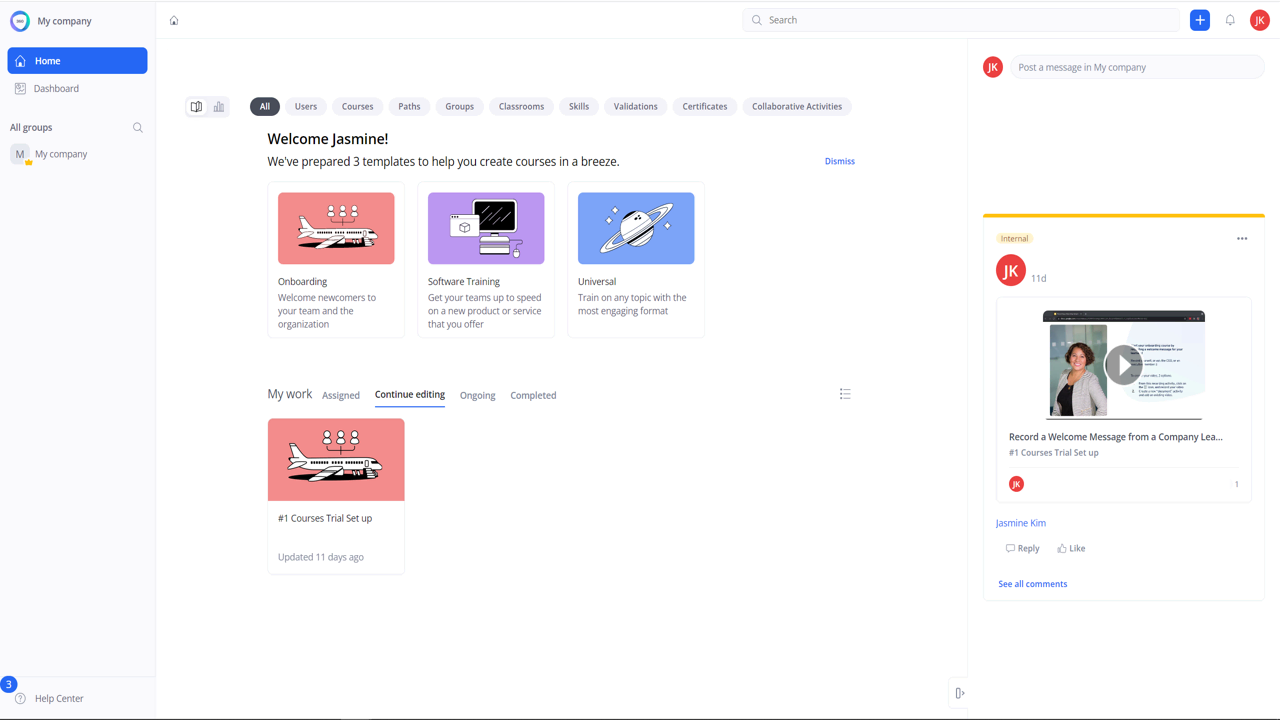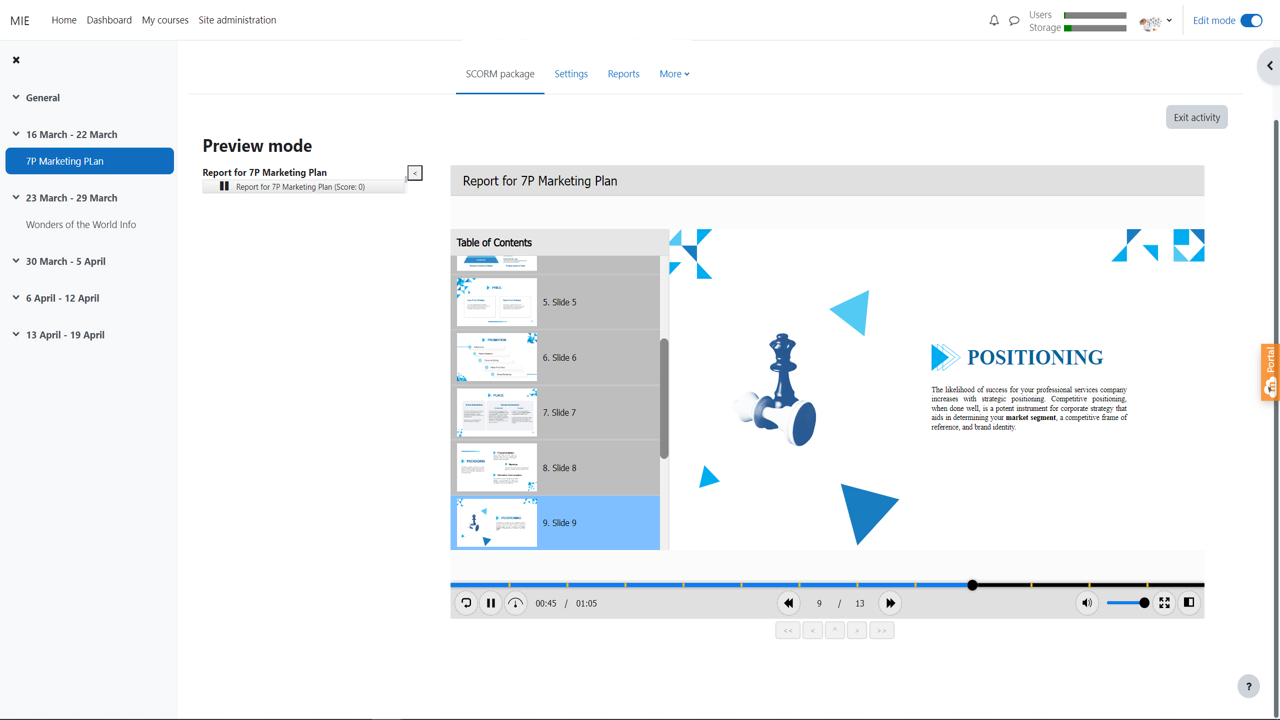LXP vs LMS are becoming trending keywords in eLearning industry. What are they? What are their differences? This blog will uncover them all.
Since technology brings the world closer to each other, education is on the way to shifting itself to online environments. As expected, learning content will, without a doubt, surely drown learners in the sea of courses. Without a categorized system for guiding, learners could not set up suitable learning progress for themselves. Added to that, the more learners join online learning/training settings, the need for a management system to track a great volume of participants is also higher.
For that reason, LMS (learning management system) was born to arrange learning content in order. The other, LXP (learning experience platform) is welcomed as a more flexible and engaging collaborative learning platform. We will walk through several main points, and compare LXP vs LMS in detail.
If you’re looking for an eLearning authoring tool which can help you create fully responsive courses on your desktop or MAC, try ActivePresenter. This powerful authoring tool empowers you to design truly fully responsive eLearning courses that adapt seamlessly to desktops, tablets, and smartphones. Beyond beautiful design, ActivePresenter ensures your content is ready for the modern learning landscape, offering robust output options including SCORM and xAPI. This means you can effortlessly track learner progress and activity and confidently upload your courses to virtually any Learning Management System (LMS), ensuring maximum compatibility and reach for your training initiatives. Create, publish, and deliver engaging, trackable eLearning with ActivePresenter. Download ActivePresenter today and start building your next great course!

I. What is LXP?
1. Definition of LXP
LXP is a cloud-based learning experience platform designed to personalize learning for each individual or specific learning group. With this unique feature, LXP creates a collaborative learning environment among learners.
2. Purposes of LXP
2.1. Personalized Learning
LXP could be considered a personal learning touch point. The reason is the course maker could create learning content from different sources. For instance, recording screen for hands-on instruction, inserting an article highlighting opinions, embedding a YouTube video related to the learning, etc. With blended learning sources, learners can have the look and feel of the study session and jump into different learning formats with flexible content.
2.2. Collaborative Learning
LXPs promote social learning by enabling learners to communicate with one another and exchange knowledge and skills (via comments, and private built-in chat). This makes it possible for students to cooperate on projects and learn from one another, thus enhancing the learning experience.

3. How LXP Works
As a course maker, feel free to edit learning content without using a single line of code. After that, you can set up the course’s related parts: invite learners, comment settings, etc.
As a course taker, you can follow the learning path, contribute to the learning content and join to learn with your fellows or colleagues.
4. LXP Example
If you are in charge of building courses, you can choose to build content from scratch, or from available templates, if your LXPs have.
Such as in 360Learning, you can set up a learning space for your internal teams and invite others to build courses with you. Nonetheless, with LXPs, you are able to drag and drop YouTube videos and utilize built-in attributes to make learning content more diversified. You can, but are not limited to recording screens, adding basic quizzes, commenting, and tagging other learners. Last but not least, you are able to view the reports, comments, reactions, and feedback of all participants too.

Key takeaways: With LXP, you are the explorer, you could go and find your way to set up a learning path for your internal team for particular training. Your training or teaching material may be adjusted based on your arrangement.
II. What is LMS?
1. Definition of LMS
According to Steve D. Foreman, the author of the LMS Guidebook: “Learning Management Systems Demystified, “An LMS is a multi-user software application, usually accessed through a web browser. It helps organizations manage training events, self-paced courses, and blended learning programs. LMSs provides automation that replaces rigorous and expensive manual work, saves time, and enables you to organize your content, data, and learners. It tracks and reports on training activity and results.”
All in all, we can define in short LMS as the platform that helps you distribute and manage eLearning courses, as well as track performances.
2. Purpose of LMS
Another question may pop up in your mind, why do I need an LMS? Imagine you manage a global brand with thousands of employees across continents, countries, and time zones. Now you want to train all your employees with a new training session. You not only want their participation but also to keep track of their learning process. Then how would you do it? LMS is the key solution to solve this issue.
2.1. Distribute the Learning
According to Learning Management Systems (LMS) Quick Start Courses, LMS centralizes the learning and distributes the learning to those in need. When users are in the courses in LMS, they know what they have learned, and what needs to be learned as well. In other words, they can grasp the overall courses to weigh and estimate the efforts and time to finish the courses.
2.2. Track the Learning Progress
The course maker can receive learners’ performance in real-time. They can see how learners are doing with the tests, including the number of corrections, at which quizzes they answer wrongly, pass or fail the test with minimum grade setting, and so forth.

3. How does LMS Work?
Depending on your role and position in the learning or training process, you will be given several rights to work on this platform.
For example, if you are the administrator of an institution or an organization, you are allowed to enroll participants, categorize courses, manage reports, etc.
If you are a teacher, or lecturer, then you can upload courses, including, but not limited to slides material, tests, and quizzes, and manage learners’ reports.
If you are purely learners, you will be given an account, attend courses, finish any exercises, quizzes, and tests assigned to you, and see your test results and your progress.
4. LMS Example
You may get acquainted with Moodle, a distinctive and popular example of an LMS. With Moodle, as a course maker, you are allowed to create courses, enroll participants, and set passing scores and completion conditions for courses as visualized

Key takeaways: LMS is a centralized learning platform where it disseminates the teaching/training and tracks the learning progress of participants simultaneously.
III. LMS vs LXP, What are the Differences?
Overall, LMS is regarded for training or teaching activities with a well-structured curriculum and solid content. On the other hand, LXP is considered a more flexible, open learning environment when compared to traditional LMS. The table below summarizes the unique features of LMS vs LXP and how it differs from each other.
| LMS | LXP | |
|---|---|---|
| Goal | Distribute and manage learning courses. | Create personalize and collaborative learning courses. |
| Content | Centralized and structured learning content. | Learning content curation, add-in variety of learning sources. |
| Report | Track and report on learning progress, test performance, course completion. | More personal insight preferences: reaction to learning content, interest, feedback. |
IV. Which is better, LMS or LXP?
This question may be a certain issue for company directors when comparing LXP vs LMS to decide which platforms they should land on. Which may sit well for their needs? LMS or LXP? The answer varies depending on the needs, objectives, and culture of your company. Businesses have many different shapes and sizes, so there is no solid answer to respond to. Even if you opt-in for LMS, there are still many issues worth concerning. You would continue to wonder whether to select academic or corporate LMS, stand-alone or cloud-based LMS, ready-made LMS or custom-made, select the authoring tool and set forth. Moreover, if you land on LXPs, you will be in the selection of LXPs format, including social learning-based LXP, micro learning-based LXP, etc.
These are several quick start guides to start before making the final decision:
Prefer LMS over LXP when…
- Your company is a multinational business operating formal and systematic training worldwide,
- You would like to operate massive training/teaching for a large volume of employees in your company,
- You need control over centralized learning content, learners’ enrollment, and performances.
Prefer LXP over LMS when…
- Your company is newly born with not much staff,
- You want to conduct a flexible and informal continuous learning environment,
- You prioritize collaborative learning among team members, but still personalized.
However, it is crucial to note that certain businesses can profit from utilizing a hybrid strategy that incorporates both the LXP and LMS capabilities to produce a distinctive learning environment for their staff. In these circumstances, the company can take advantage of each platform’s advantages to meet its different learning objectives.
Last Words
LMS vs LXP’s presence are for the service of ongoing and perpetual learning requirements of human beings. LMS will direct companies and institutions to formal and centralized learning content while LXP aims at personalized, flexible, and cooperative learning.
Whichever platform you prefer, it is worth noticing that LXP and LMS are just tools for learning management to help you leverage learners’ learning progress and performance. Choose wisely, profitably, and suitably that sit well with your organization, school, and institution’s needs and preference.
People are also searching for:
LMS vs Authoring Tool: A Comprehensive Look
eLearning Authoring Tools: Key Elements Checklist for Beginners
6 Practical eLearning Examples for School and Workplace Learning